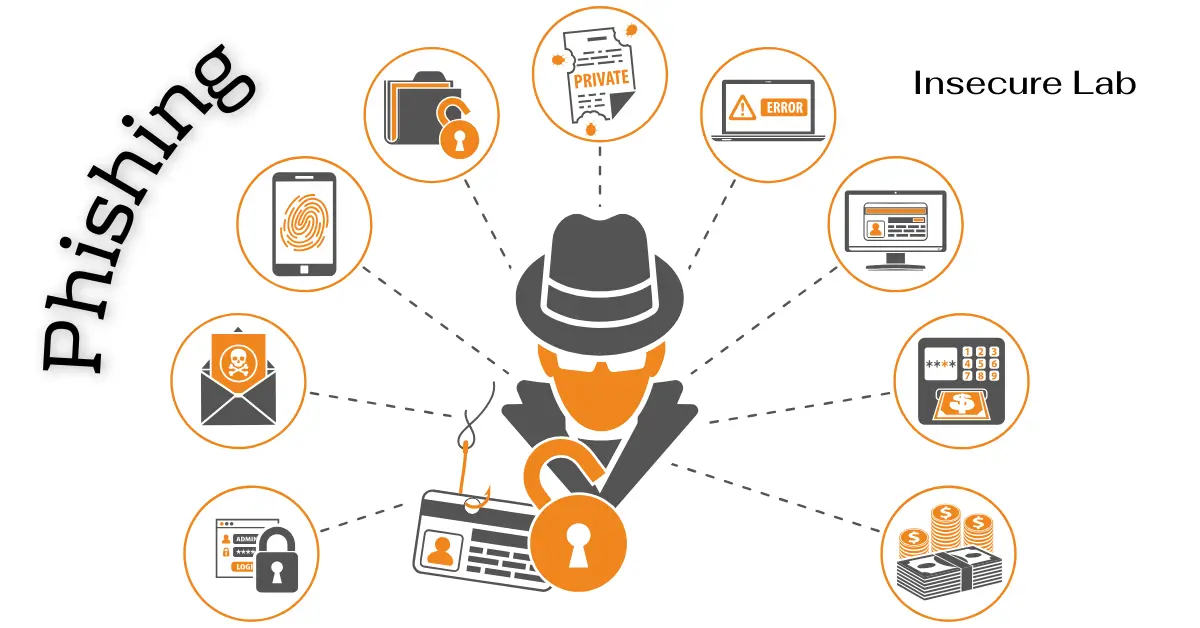🔍 Search
📥 Subscribe
Phishing Attack

Table of Contents
This ethical hacking guide explains what phishing is, how it works, types of phishing attacks and techniques to prevent it in cyber security.
What is Phishing?
Phishing is a type of social engineering attack in which the attacker tricks the victim into revealing sensitive information such as login credentials, financial details or personal data. This usually involves the use of fraudulent emails, instant messages, phone calls or websites imitating legitimate organizations or individuals.
How Phishing Works?
The process of a phishing attack generally follows these steps:
- Deception: The attacker sends a message that appears to be from a trusted source.
- Lure: The message usually includes a compelling reason for the recipient to act.
- Exploitation: Upon engaging, the victim is often directed to a fraudulent website.
- Extraction: The attacker collects sensitive information entered by the victim.
Types of Phishing Attacks
Phishing attacks can manifest in various forms, each targeting individuals or organizations through different communication channels and techniques. Here are some common types of phishing attacks:
1. Email Phishing
Email phishing is the most common form of phishing attack. Attackers send deceptive emails that appear legitimate, often impersonating trusted entities like banks, social media platforms, or government agencies. These emails contain malicious links or attachments designed to steal login credentials or install malware.
2. Spear Phishing
Spear phishing is a targeted form of phishing where attackers customize their messages for specific individuals or organizations. They gather information about the target's interests, job, or relationships to create convincing and personalized messages. This makes spear phishing harder to detect.
3. Whaling
Whaling is a specialized form of spear phishing that targets high-profile individuals like CEOs, directors, politicians, or celebrities. These attacks are carefully crafted to capture the attention of the target with highly specific information.
4. Vishing (Voice Phishing)
Vishing, or voice phishing, involves fraudulent phone calls where scammers impersonate trusted entities to trick victims into disclosing sensitive information over the phone. These calls often appear to come from banks, government agencies, or tech support.
5. Smishing (SMS Phishing)
Smishing is a type of phishing that occurs through text messages (SMS). Attackers send fake messages containing links to malicious websites or requests for personal information, posing as legitimate organizations or contacts.
6. Pharming
Pharming attacks involve redirecting users to fraudulent websites even if they enter the correct web address. Attackers manipulate the Domain Name System (DNS) or compromise routers to achieve this. Victims unknowingly visit fake sites where they may enter sensitive data.
7. Clone Phishing
Clone phishing involves duplicating a legitimate email and modifying its content to include malicious links or attachments. Attackers send the cloned email from a similar-looking email address, tricking recipients into thinking it's legitimate.
8. Angler Phishing
Angler phishing targets users through social media platforms, impersonating customer service accounts to trick users into revealing personal information.
Prevention Methods
Preventing phishing attacks requires a combination of awareness, vigilance, and adopting security best practices. Here are some effective preventive measures to help protect against phishing:
1. Advanced Email Filters
Implement robust email filtering solutions to automatically detect and quarantine phishing emails before they reach users' inboxes.
2. Email Authentication Protocols
Utilize email authentication protocols like SPF (Sender Policy Framework), DKIM (DomainKeys Identified Mail), and DMARC (Domain-based Message Authentication, Reporting, and Conformance). These protocols verify the authenticity of the sender's domain and help prevent unauthorized use of email addresses associated with your domain.
3. Verify HTTPS (SSL Certificate)
Always ensure websites use HTTPS for secure data transmission. Check for padlock symbols and verify website URLs before entering sensitive information.
4. Antivirus and Anti-Malware Software
Install and regularly update antivirus and anti-malware software to detect and block malicious software that may be delivered through phishing attacks.
5. Reporting and Incident Response
Establish clear procedures for reporting suspected phishing attempts. Develop an incident response plan to swiftly address and mitigate phishing incidents.
Summary
Phishing attacks continue to pose significant risks to individuals and organizations. By understanding the various types of phishing attacks, recognizing common examples, and implementing prevention methods, you can significantly reduce the likelihood of falling victim to these scams. Regular training, vigilance, and a proactive cybersecurity approach are essential in the ongoing battle against phishing threats.
